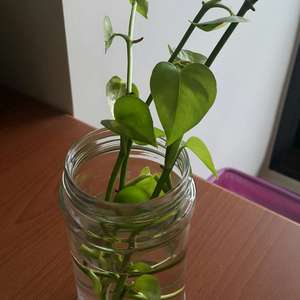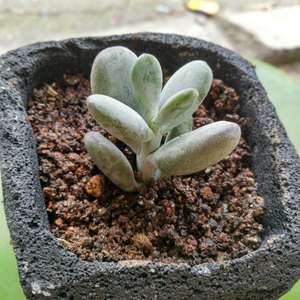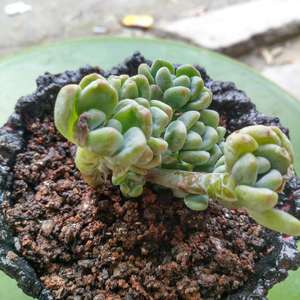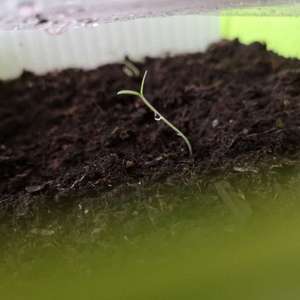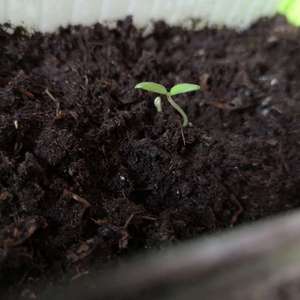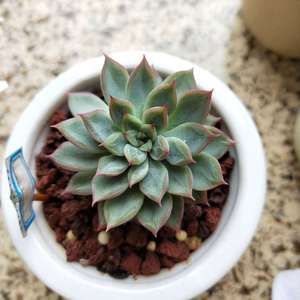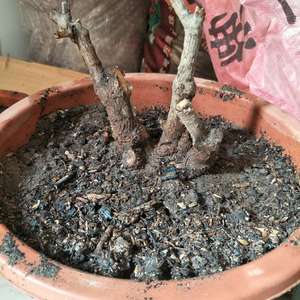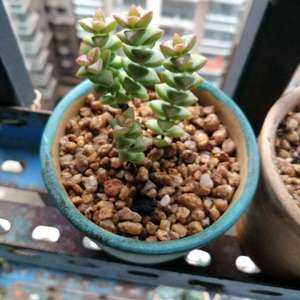文章
Miss Chen
2018年06月29日

Spike of FlowerheadsDescription: This perennial plant is 2-5' tall and unbranched. The central stem is light green to purplish green, terete or slightly ridged, and glabrous to sparsely pubescent. The alternate leaves are up to 10" long and about 1/3" (8 mm.) across, becoming smaller as they ascend the stem. Because of their dense distribution, they appear almost whorled. The leaves are linear in shape and their margins are smooth (entire). Each leaf has a distinct central vein. Both the upper and lower leaf surfaces are light to medium green and glabrous to sparsely hairy. The central stem terminates in a wand-like spike of flowerheads about 4-18" in length. These flowerheads are densely crowded along the spike, facing in all directions; they bloom at the top of the spike first, opening later below. Each flowerhead is about 1/3" (8 mm.) across, consisting of 4-10 disk florets and no ray florets. The corolla of each disk floret is pink to purplish pink (rarely white) and narrowly tubular. The upper corolla divides in 5 small lobes that are lanceolate in shape and somewhat recurved. A deeply divided style is strongly exerted from the corolla; it is white to light pink, filiform, and sometimes slightly twisted or curved. Around the base of each flowerhead, there are appressed floral bracts (phyllaries) that are overlapping. These floral bracts are green to purple, glabrous, and oval in shape. The blooming period occurs from mid- to late summer, lasting about 3 weeks. There is no noticeable floral scent. Afterwards, the florets are replaced by small achenes with stiff bristles at their apices; these bristles are light brown. The root system consists of a corm with shallow fibrous roots. Colonies of plants are often formed by means of clonal offsets that involve the production of new corms.
Cultivation: The preference is full sun, moist conditions, and sandy loam. Other soil types, such as loam and gravelly loam, are readily tolerated in cultivation. The soil should possess sufficient organic material to retain moisture. The height of this plant can vary considerably, depending on its maturity, soil moisture, and soil fertility. During hot dry weather, the lower leaves may wither away, otherwise this plant presents few problems.
Range & Habitat: The native Marsh Blazingstar occurs in NE Illinois and a few scattered counties elsewhere (see Distribution Map). It is an uncommon plant in the wild. Habitats include moist black soil prairies, moist sand prairies, prairie swales, edges of marshes and bogs, grassy fens, calcareous seeps, moist alkaline sandflats, and areas along railroads. This blazingstar is found primarily in higher quality natural areas, especially where it is sandy.

Faunal Associations: The flowerheads are cross-pollinated by bumblebees, long-horned bees (Melissodes spp.), leaf-cutting bees (Megachile spp.), butterflies, and skippers. These insects suck nectar, although some of the bees also collect pollen for their larvae. Two uncommon prairie insects feed on Liatris spp. (blazingstars): caterpillars of Schinia sanguinea (Liatris Flower Moth) feed on the florets and developing seeds, while caterpillars of Carmenta anthracipennis (Liatris Borer Moth) bore through the stems. Mammalian herbivores eat this and other blazingstars readily; groundhogs and rabbits favor younger plants, while deer and livestock are more likely to browse on mature plants. The corms are eaten by the Prairie Vole and Meadow Vole. An overpopulation of these animals can make the establishment of this plant difficult in some areas.
Photographic Location: The photographs were taken at a moist prairie in Meadowbrook Park, Urbana, Illinois.

Comments: Marsh Blazingstar is a very attractive plant while in bloom, resembling a magic wand. It is more common in flower gardens than in the wild, although some cultivated plants may be hybrids with similar species. Among the various Liatris spp. (blazingstars) that are native to Illinois, Prairie Blazingstar (Liatris pycnostachya) probably resembles Marsh Blazingstar the most. However, this latter plant has floral bracts (phyllaries) that are strongly recurved, while the floral bracts of Marsh Blazingstar are appressed together and relatively smooth. Other blazingstars within the state are either shorter in height or they have larger flowerheads with more disk florets per head. While other blazingstars are typically found in mesic prairies and various upland habitats, Marsh Blazingstar is unusual in its preference for wetter habitats.
Cultivation: The preference is full sun, moist conditions, and sandy loam. Other soil types, such as loam and gravelly loam, are readily tolerated in cultivation. The soil should possess sufficient organic material to retain moisture. The height of this plant can vary considerably, depending on its maturity, soil moisture, and soil fertility. During hot dry weather, the lower leaves may wither away, otherwise this plant presents few problems.
Range & Habitat: The native Marsh Blazingstar occurs in NE Illinois and a few scattered counties elsewhere (see Distribution Map). It is an uncommon plant in the wild. Habitats include moist black soil prairies, moist sand prairies, prairie swales, edges of marshes and bogs, grassy fens, calcareous seeps, moist alkaline sandflats, and areas along railroads. This blazingstar is found primarily in higher quality natural areas, especially where it is sandy.

Faunal Associations: The flowerheads are cross-pollinated by bumblebees, long-horned bees (Melissodes spp.), leaf-cutting bees (Megachile spp.), butterflies, and skippers. These insects suck nectar, although some of the bees also collect pollen for their larvae. Two uncommon prairie insects feed on Liatris spp. (blazingstars): caterpillars of Schinia sanguinea (Liatris Flower Moth) feed on the florets and developing seeds, while caterpillars of Carmenta anthracipennis (Liatris Borer Moth) bore through the stems. Mammalian herbivores eat this and other blazingstars readily; groundhogs and rabbits favor younger plants, while deer and livestock are more likely to browse on mature plants. The corms are eaten by the Prairie Vole and Meadow Vole. An overpopulation of these animals can make the establishment of this plant difficult in some areas.
Photographic Location: The photographs were taken at a moist prairie in Meadowbrook Park, Urbana, Illinois.

Comments: Marsh Blazingstar is a very attractive plant while in bloom, resembling a magic wand. It is more common in flower gardens than in the wild, although some cultivated plants may be hybrids with similar species. Among the various Liatris spp. (blazingstars) that are native to Illinois, Prairie Blazingstar (Liatris pycnostachya) probably resembles Marsh Blazingstar the most. However, this latter plant has floral bracts (phyllaries) that are strongly recurved, while the floral bracts of Marsh Blazingstar are appressed together and relatively smooth. Other blazingstars within the state are either shorter in height or they have larger flowerheads with more disk florets per head. While other blazingstars are typically found in mesic prairies and various upland habitats, Marsh Blazingstar is unusual in its preference for wetter habitats.
0
0
文章
Miss Chen
2018年06月29日

Description: This plant is a summer annual about 2-8" tall and similarly across. Large plants are abundantly branched, although small plants are sometimes unbranched. The slender stems are green or reddish green, terete, and glandular-hairy. The leaves occur in opposite pairs or in whorls of 3. They are up to 1" long and ½" across, pinnately lobed, green, and glandular-hairy. Each leaf has 3-7 linear-oblong lobes and a few dentate teeth or small secondary lobes. Because of the sticky foliage, the entire plant may become brownish green if it becomes immersed in muddy water. Individual flowers are produced from the axils of the upper leaves (one flower per leaf axil).
Each flower has a tubular corolla up to ¼" long and a calyx with 5 linear-lanceolate teeth. The corolla is pale blue-violet, lavender, or nearly white, and weakly two-lipped. The upper lip has 1-2 shallow lobes, while the lower lip has 3 shallow lobes. There is no nectar spur on the corolla. The calyx is green and glandular-hairy. The pedicels are up to ¼" long, green or pale reddish green, terete, and glandular-hairy. The blooming period occurs from mid-summer into the fall. Individual plants may bloom intermittently for 1-2 months, if not longer. Each flower is replaced with an ovoid seed capsule that is about the same length as the calyx teeth (less than ¼" in length). Each capsule contains many tiny seeds that are light brown and dust-like. The seeds can be carried aloft by the wind or float on water. The root system consists of a shallow branching taproot and fibrous secondary roots. This plant reproduces by reseeding itself.
Cultivation: The preference is light shade to full sun, wet to moist conditions, and soil that is muddy, sandy, gravelly, or rocky. Growth and development occur primarily during the summer and early fall. This plant can tolerate occasional inundation by water if it is temporary. It is intolerant of competition from taller ground vegetation.

Range & Habitat: The native Obe-wan-Conobea occurs occasionally in most areas of Illinois, except in the NW, extreme north, and some south-central counties (see Distribution Map). Outside of Illinois, it is found in the Midwest and south-central states. Habitats include prairie swales, sand and gravel bars along rivers, muddy borders of ponds, edges of springs in wooded areas, rocky depressions in limestone bluffs, sandy ditches, edges of mud puddles, and gravelly areas around parking lots. This plant is often found in disturbed areas that are partially shaded; it is also found in higher quality habitats.

Faunal Associations: Very little is known about floral-faunal relations for this plant. Small bees probably visit the flowers for nectar and possibly pollen. The glandular hairs of the foliage probably deter ants from robbing the nectar. It's possible that the tiny seeds can cling to the muddy feet or moist feathers of waterfowl (especially ducks and geese). When the waterfowl visit other wetlands, this would spread the seeds into new areas.
Photographic Location: Gravelly ground near a parking lot at a shopping mall in Champaign, Illinois.
Comments: This is another small annual plant of the Figwort family that produces small tubular flowers. Because of its diminutive size, Obe-Wan-Conobea is easy to overlook, especially when it isn't blooming. The small annual plants of the Figwort family occur in either dry areas or wetlands where there is scant or low ground vegetation. Obe-Wan-Conobea is found in wetlands or moist wooded areas. It differs from other plants in this group by its pinnately lobed leaves, which are sometimes whorled. This makes Obe-Wan-Conobea relatively easy to identify. The derivation of the strange common name comes from a publication of Floyd Swink, who named this plant after a character in the movie Star Wars, although the publisher did not discover this until after his book was already published (John White, personal communication). Another common name for this plant is Narrow-Leaved Paleseed, which was undoubtedly invented by a botanist. A scientific synonym for this species is Conobea multifida.
Each flower has a tubular corolla up to ¼" long and a calyx with 5 linear-lanceolate teeth. The corolla is pale blue-violet, lavender, or nearly white, and weakly two-lipped. The upper lip has 1-2 shallow lobes, while the lower lip has 3 shallow lobes. There is no nectar spur on the corolla. The calyx is green and glandular-hairy. The pedicels are up to ¼" long, green or pale reddish green, terete, and glandular-hairy. The blooming period occurs from mid-summer into the fall. Individual plants may bloom intermittently for 1-2 months, if not longer. Each flower is replaced with an ovoid seed capsule that is about the same length as the calyx teeth (less than ¼" in length). Each capsule contains many tiny seeds that are light brown and dust-like. The seeds can be carried aloft by the wind or float on water. The root system consists of a shallow branching taproot and fibrous secondary roots. This plant reproduces by reseeding itself.
Cultivation: The preference is light shade to full sun, wet to moist conditions, and soil that is muddy, sandy, gravelly, or rocky. Growth and development occur primarily during the summer and early fall. This plant can tolerate occasional inundation by water if it is temporary. It is intolerant of competition from taller ground vegetation.

Range & Habitat: The native Obe-wan-Conobea occurs occasionally in most areas of Illinois, except in the NW, extreme north, and some south-central counties (see Distribution Map). Outside of Illinois, it is found in the Midwest and south-central states. Habitats include prairie swales, sand and gravel bars along rivers, muddy borders of ponds, edges of springs in wooded areas, rocky depressions in limestone bluffs, sandy ditches, edges of mud puddles, and gravelly areas around parking lots. This plant is often found in disturbed areas that are partially shaded; it is also found in higher quality habitats.

Faunal Associations: Very little is known about floral-faunal relations for this plant. Small bees probably visit the flowers for nectar and possibly pollen. The glandular hairs of the foliage probably deter ants from robbing the nectar. It's possible that the tiny seeds can cling to the muddy feet or moist feathers of waterfowl (especially ducks and geese). When the waterfowl visit other wetlands, this would spread the seeds into new areas.
Photographic Location: Gravelly ground near a parking lot at a shopping mall in Champaign, Illinois.
Comments: This is another small annual plant of the Figwort family that produces small tubular flowers. Because of its diminutive size, Obe-Wan-Conobea is easy to overlook, especially when it isn't blooming. The small annual plants of the Figwort family occur in either dry areas or wetlands where there is scant or low ground vegetation. Obe-Wan-Conobea is found in wetlands or moist wooded areas. It differs from other plants in this group by its pinnately lobed leaves, which are sometimes whorled. This makes Obe-Wan-Conobea relatively easy to identify. The derivation of the strange common name comes from a publication of Floyd Swink, who named this plant after a character in the movie Star Wars, although the publisher did not discover this until after his book was already published (John White, personal communication). Another common name for this plant is Narrow-Leaved Paleseed, which was undoubtedly invented by a botanist. A scientific synonym for this species is Conobea multifida.
0
0
文章
Miss Chen
2018年06月28日

Description: This perennial plant is 2-3' tall. It produces clumps of basal leaves that are sword-shaped and up to 3' long; they are mostly erect, although some of the larger leaves may become arched. These leaves are bluish green to green and glabrous. Individual leaves are up to 1" across near their bases, tapering very gradually to pointed tips. Leaf margins are smooth (entire) and leaf venation is parallel. The flowering stalks are either unbranched or sparingly branched and up to 3' tall; they are green, terete, and glabrous. Each stalk produces one or more small alternate leaves that are erect and sword-like. From the axil of each alternate leaf, there develops 1-2 flowers on pedicels 1-5" in length. Both the flowering stalks and pedicels are terete and glabrous. Each pedicel is enfolded by a pair of sword-like spathes that become chaffy with age.
The blue-violet flowers are up to 3½" across, consisting of 3 sepals, 3 petals, 3 stamens, 3 style-branches with stigmata, and a green ovary that is elongated and angular. The petaloid sepals are oblanceolate in shape and spread outward from the center of the flower; they are blue-violet with prominent patches of yellow and white with fine purple veins. The sepals are without tufted hairs. Extending directly above the sepals, are the shorter petaloid style-branches; they are blue-violet and oblong in shape with upturned tips, forming open tubular structures with the sepals. The ascending petals are blue-violet and oblanceolate in shape with darker purple veins. The blooming period is late spring to early summer, and lasts about a month for a colony of plants, although individual flowers are short-lived. There is a pleasant floral fragrance. Afterwards, the flowers are replaced by oblongoid capsules that are 3-angled. These capsules are about 1½–2" long and ½" across; they contain rows of tightly stacked seeds. After the capsules split open, the seeds can float on water, spreading to new areas via water currents. The root system consists of fleshy rhizomes with coarse fibrous roots. Colonies of plants often develop from the rhizomes.

Cultivation: The preference is wet to moist conditions, partial to full sun, and a rich organic soil. In light shade, this plant often fails to flower, and it tends to decline in abundance if conditions become too dry. The foliage is rarely bothered by disease. To maintain the viability of the seeds, they should not be allowed to dry out – store them with some moist sand.
Range & Habitat: The native Blue Flag Iris is surprisingly common in most areas of Illinois, except for some southern and western counties where it is uncommon or absent (see Distribution Map). Habitats include wet to moist black soil prairies, prairie swales, soggy meadows along rivers, open bottomland woodlands, swamps, fens, seeps, edges of ponds and streams, ditches, and low-lying ground along railroads and roadsides. Declining remnant populations can be found in some low woodland areas where fire has been surpressed.

Faunal Associations: The flowers are cross-pollinated by bumblebees and long-horned bees (Synhalonia spp.); butterflies and skippers also visit the flowers occasionally, but they are less effective at cross-pollination. These insects suck nectar from the flowers primarily, although some of the bees also collect pollen. Some insects feed on Blue Flag Iris and other Iris spp. destructively. They include such species as the weevil Mononychus vulpeculus (larvae feed inside seed capsules), the Agromyzid fly Cerodontha magnicornis (larvae mine leaves), the Syrphid fly Eumerus tuberculatus (larvae feed on rhizomes), the mealybug Rhizoecus falcifer (feeds on rhizomes), the aphid Dysaphis tulipae (feeds on foliage & rhizomes), and the thrips Frankliniella occidentalis (feeds on flowers). Caterpillars of such moths as Ctenucha virginica (Virginia Ctenucha), Spilosoma congrua (Agreeable Tiger Moth), and Macronoctua onusta (Iris Borer Moth), also feed on these plants. Mammalian herbivores rarely bother this plant because the foliage and rootstocks are somewhat toxic, causing irritation of the gastrointestinal tract.

Photographic Location: The photographs were taken at a wet prairie along an abandoned railroad near Urbana, Illinois, and at a prairie swale in Meadowbrook Park of the same city.
Comments: This attractive plant is more typical of wetlands than true prairies, but it sometimes spreads into adjacent sunny areas that are moist. Cultivars of Iris X germanica (German Iris) have beards (numerous hairs) on their sepals, while the Blue Flag Iris is beardless. The Blue Flag Iris resembles another native species, Iris brevicaulis (Blue Marsh Iris), but this latter species has 6-angled capsules and flowering stalks that are slightly zigzag. Another native species, Iris versicolor (Northern Blue Flag), is very similar in appearance to the Blue Flag Iris, but it has a more northern distribution (the upper Great Lakes and NE USA, including northern Wisconsin). Another scientific name for the Blue Flag Iris is Iris shrevei; another common name for this species is the Southern Blue Flag.
The blue-violet flowers are up to 3½" across, consisting of 3 sepals, 3 petals, 3 stamens, 3 style-branches with stigmata, and a green ovary that is elongated and angular. The petaloid sepals are oblanceolate in shape and spread outward from the center of the flower; they are blue-violet with prominent patches of yellow and white with fine purple veins. The sepals are without tufted hairs. Extending directly above the sepals, are the shorter petaloid style-branches; they are blue-violet and oblong in shape with upturned tips, forming open tubular structures with the sepals. The ascending petals are blue-violet and oblanceolate in shape with darker purple veins. The blooming period is late spring to early summer, and lasts about a month for a colony of plants, although individual flowers are short-lived. There is a pleasant floral fragrance. Afterwards, the flowers are replaced by oblongoid capsules that are 3-angled. These capsules are about 1½–2" long and ½" across; they contain rows of tightly stacked seeds. After the capsules split open, the seeds can float on water, spreading to new areas via water currents. The root system consists of fleshy rhizomes with coarse fibrous roots. Colonies of plants often develop from the rhizomes.

Cultivation: The preference is wet to moist conditions, partial to full sun, and a rich organic soil. In light shade, this plant often fails to flower, and it tends to decline in abundance if conditions become too dry. The foliage is rarely bothered by disease. To maintain the viability of the seeds, they should not be allowed to dry out – store them with some moist sand.
Range & Habitat: The native Blue Flag Iris is surprisingly common in most areas of Illinois, except for some southern and western counties where it is uncommon or absent (see Distribution Map). Habitats include wet to moist black soil prairies, prairie swales, soggy meadows along rivers, open bottomland woodlands, swamps, fens, seeps, edges of ponds and streams, ditches, and low-lying ground along railroads and roadsides. Declining remnant populations can be found in some low woodland areas where fire has been surpressed.

Faunal Associations: The flowers are cross-pollinated by bumblebees and long-horned bees (Synhalonia spp.); butterflies and skippers also visit the flowers occasionally, but they are less effective at cross-pollination. These insects suck nectar from the flowers primarily, although some of the bees also collect pollen. Some insects feed on Blue Flag Iris and other Iris spp. destructively. They include such species as the weevil Mononychus vulpeculus (larvae feed inside seed capsules), the Agromyzid fly Cerodontha magnicornis (larvae mine leaves), the Syrphid fly Eumerus tuberculatus (larvae feed on rhizomes), the mealybug Rhizoecus falcifer (feeds on rhizomes), the aphid Dysaphis tulipae (feeds on foliage & rhizomes), and the thrips Frankliniella occidentalis (feeds on flowers). Caterpillars of such moths as Ctenucha virginica (Virginia Ctenucha), Spilosoma congrua (Agreeable Tiger Moth), and Macronoctua onusta (Iris Borer Moth), also feed on these plants. Mammalian herbivores rarely bother this plant because the foliage and rootstocks are somewhat toxic, causing irritation of the gastrointestinal tract.

Photographic Location: The photographs were taken at a wet prairie along an abandoned railroad near Urbana, Illinois, and at a prairie swale in Meadowbrook Park of the same city.
Comments: This attractive plant is more typical of wetlands than true prairies, but it sometimes spreads into adjacent sunny areas that are moist. Cultivars of Iris X germanica (German Iris) have beards (numerous hairs) on their sepals, while the Blue Flag Iris is beardless. The Blue Flag Iris resembles another native species, Iris brevicaulis (Blue Marsh Iris), but this latter species has 6-angled capsules and flowering stalks that are slightly zigzag. Another native species, Iris versicolor (Northern Blue Flag), is very similar in appearance to the Blue Flag Iris, but it has a more northern distribution (the upper Great Lakes and NE USA, including northern Wisconsin). Another scientific name for the Blue Flag Iris is Iris shrevei; another common name for this species is the Southern Blue Flag.
0
0
文章
Miss Chen
2018年06月27日

Description: This wildflower is a summer annual about 3-6' tall, branching frequently. The somewhat succulent stems are light green, glabrous, and glaucous. The alternate leaves are up to 4" long and 2" across. They are ovate, hairless, and serrated along the margins; their slender petioles are up to 2" long. From theClose-up of Flowers axils of the middle to upper leaves, short racemes of 1-3 flowers are produced. Each flower is about 1–1¼" long, consisting of 5 petals, 3 sepals, and reproductive organs within the tubular corolla. This corolla is yellow, or less often cream-colored, and consists of the fusion (or near fusion) of the 5 petals and lower sepal. The lower sepal is petaloid; it defines the conical posterior of the corolla, which tapers to a tiny nectar spur that curls downward. The upper petal defines the upper lip (or hood) of the corolla, while the two lower petals form a pair of well-rounded lobes that are rather irregular and wrinkled. Two small lateral petals define the sides of the corolla opening, although they are difficult to see when the flowers are viewed from above. There are usually reddish brown spots within the interior of the corolla, although they are sometimes absent. The upper 2 sepals are light green and ovate in shape; they are located at the top of the corolla, rather than behind or underneath. Each flower dangles from a slender pedicel about ¾" long. The blooming period occurs from mid-summer to early fall and lasts about 2-3 months. Each fertilized flower is replaced by an ellipsoid seedpod up to 2" long. This seedpod is broadest toward the middle, tapering toward its tips; it has several dark green lines along its length. As the seedpod ripens, it splits open and ejects the seeds. The root system consists of a shallow branching taproot.
Cultivation: The preference is partial sun, wet to moist conditions, and soil that is loamy or mucky. Yellow Jewelweed also tolerates full sun, light shade, and mesic conditions (if it receives some protection from the afternoon sun). This species is a little more tolerant of dry conditions than Impatiens capensis (Orange Jewelweed). It grows rapidly from seed during the summer and can achieve an impressive size.
Range & Habitat: The native Yellow Jewelweed occurs occasionally in central and northern Illinois; it is less common or absent in the southern portion of the state (see Distribution Map). Habitats include muddy borders along ponds and streams (especially in wooded areas), swamps, openings in moist deciduous woodlands, and soggy thickets. Sometimes this species is cultivated in gardens.

Faunal Associations: The nectar of the flowers attracts the Ruby-Throated Hummingbird and bumblebees; the latter are especially common visitors. The caterpillars of various moths feed on the foliage, including Euchlaena obtusaria (Obtuse Euchlaena), Spilosoma latipennis (Pink-Legged Tiger Moth), Trichodezia albovittata (White-Striped Black), and Xanthorhoe lacustrata (Toothed Brown Carpet). The large seeds are eaten by various gamebirds, including the Ruffed Grouse, Ring-Necked Pheasant, Greater Prairie Chicken, and Bobwhite Quail. The White-Footed Mouse also eats the seeds. White-Tail Deer browse on the foliage.
Photographic Location: The photographed plants were growing along the back alley of a residential area in Urbana, Illinois.
Comments: Yellow Jewelweed is closely related to the more common Impatiens capensis (Orange Jewelweed). It is very similar in appearance to the latter species, except that its flowers are yellow, rather than orange. The tubular corolla of Yellow Jewelweed is broader toward its posterior, and its 2 lower petals are divided at the base, rather than fused together. Both of these Jewelweeds have attractive foliage and large interesting flowers that bloom over an extended period of time.
Cultivation: The preference is partial sun, wet to moist conditions, and soil that is loamy or mucky. Yellow Jewelweed also tolerates full sun, light shade, and mesic conditions (if it receives some protection from the afternoon sun). This species is a little more tolerant of dry conditions than Impatiens capensis (Orange Jewelweed). It grows rapidly from seed during the summer and can achieve an impressive size.
Range & Habitat: The native Yellow Jewelweed occurs occasionally in central and northern Illinois; it is less common or absent in the southern portion of the state (see Distribution Map). Habitats include muddy borders along ponds and streams (especially in wooded areas), swamps, openings in moist deciduous woodlands, and soggy thickets. Sometimes this species is cultivated in gardens.

Faunal Associations: The nectar of the flowers attracts the Ruby-Throated Hummingbird and bumblebees; the latter are especially common visitors. The caterpillars of various moths feed on the foliage, including Euchlaena obtusaria (Obtuse Euchlaena), Spilosoma latipennis (Pink-Legged Tiger Moth), Trichodezia albovittata (White-Striped Black), and Xanthorhoe lacustrata (Toothed Brown Carpet). The large seeds are eaten by various gamebirds, including the Ruffed Grouse, Ring-Necked Pheasant, Greater Prairie Chicken, and Bobwhite Quail. The White-Footed Mouse also eats the seeds. White-Tail Deer browse on the foliage.
Photographic Location: The photographed plants were growing along the back alley of a residential area in Urbana, Illinois.
Comments: Yellow Jewelweed is closely related to the more common Impatiens capensis (Orange Jewelweed). It is very similar in appearance to the latter species, except that its flowers are yellow, rather than orange. The tubular corolla of Yellow Jewelweed is broader toward its posterior, and its 2 lower petals are divided at the base, rather than fused together. Both of these Jewelweeds have attractive foliage and large interesting flowers that bloom over an extended period of time.
0
0
文章
Miss Chen
2018年06月27日

Description: This plant is a summer annual that becomes 2-5' tall, branching occasionally. The round stems are glabrous and succulent, pale green to pale reddish green, and somewhat translucent. They are rather fragile and break easily. The alternate leaves are up to 5" long and 2½" across, although they are usually about half this size. The leaves are ovate, thin-textured, and hairless. There are low broad teeth along their margins. While the stems are often shiny, the leaves have a dull upper surface. The slender petioles are up to 2" long and usually shorter than the blades of the leaves.
From the axils of the upper leaves, there occurs small clusters of 1-3 orange flowers. These flowers are held horizontally on drooping pedicels. Each flower is about 1" long and has a conical shape with upper and lower lips. There are 3 sepals and 5 petals (although this is difficult to discern). Two lateral sepals are small and membrananous; they are light green to light yellow and are located behind the upper lip. The third sepal forms the conical posterior of the flower, including the small nectar spur. This portion of the flower is typically light orange and shiny; the nectar spur usually bends forward to a position underneath the rest of the flower. The petals form the front of the flower and are usually dark orange with reddish streaks or brown dots. One petal forms the upper lip, which is curved upward, while 2 fused petals form the lower lip. The lower lip often is divided into 2 lobes and functions as a landing pad for visiting insects. There are also 2 smaller lateral petals between the upper and lower lips of the flower. A cluster of stamens with white anthers lies underneath the ovary near the upper lip. The blooming period occurs from mid-summer to early fall, and lasts about 2 months. There is no floral scent. During the fall, insignificant cleistogamous flowers form seed capsules with fertile seeds without any need for cross-pollination. These oblong seed capsules are divided into 5 sections, which split apart, flinging the large seeds a considerable distance. The root system consists of a shallow branching taproot. This plant often forms colonies by reseeding itself.
Cultivation: The preference is light shade to partial sun, wet to moist conditions, and a fertile soil with an abundance of organic material. Submergence of the roots by flood water is tolerated for up to 2 weeks without apparent ill-effects. Sometimes the leaves are affected by mildew late in the year. It is easy to start this plant from seed.
Range & Habitat: The native Orange Jewelweed is a common plant that occurs in most counties of Illinois; it is less common in the NW area of the state. Habitats include openings in moist woodlands, partially or lightly shaded floodplains along rivers, edges of woodland paths, swamps, seeps and fens, and roadside ditches. This species tolerates disturbance better than most wetland plants.
Faunal Associations: The flowers attract the Ruby-Throated Hummingbird and long-tongued bees, including bumblebees and honeybees. Swallowtail butterflies are less common visitors. These visitors seek nectar; many long-tongued bees also collect pollen. Sometimes bumblebees will steal nectar by chewing holes near the spur of the flower. Various smaller insects (e.g., Syrphid flies) will visit the same holes to steal nectar. The caterpillars of several moths feed on the foliage, including Euchlaena obtusaria (Obtuse Euchlaena), Spilosoma latipennis (Pink-Legged Tiger Moth), Trichodezia albovittata (White-Striped Black), and Xanthorhoe lacustrata (Toothed Brown Carpet). Upland gamebirds eat the large seeds, including the Ruffed Grouse, Ring-Necked Pheasant, Greater Prairie Chicken, and Bobwhite Quail. Among mammals, White-Tailed Deer browse on the foliage, while the White-Footed Mouse eats the seeds.
Photographic Location: A partially shaded roadside ditch along a woods near Urbana, Illinois.
Comments: The attractive orange flowers glisten in the sunlight, hence the name 'Jewelweed.' The other Jewelweed in this genus is Impatiens pallida (Yellow Jewelweed). The latter has similar foliage, but its flowers are pale yellow. The Jewelweeds have a muciliginous sap that is supposed to soothe skin irritation caused by Poison Ivy and Stinging Nettle. This sap also has fungicidal properties and has been used to treat Athlete's Foot. The cultivated Impatiens of the horticultural industry have been introduced from such areas as East Africa and New Guinea. They rarely escape from cultivation and are not considered a significant threat to native habitats.
From the axils of the upper leaves, there occurs small clusters of 1-3 orange flowers. These flowers are held horizontally on drooping pedicels. Each flower is about 1" long and has a conical shape with upper and lower lips. There are 3 sepals and 5 petals (although this is difficult to discern). Two lateral sepals are small and membrananous; they are light green to light yellow and are located behind the upper lip. The third sepal forms the conical posterior of the flower, including the small nectar spur. This portion of the flower is typically light orange and shiny; the nectar spur usually bends forward to a position underneath the rest of the flower. The petals form the front of the flower and are usually dark orange with reddish streaks or brown dots. One petal forms the upper lip, which is curved upward, while 2 fused petals form the lower lip. The lower lip often is divided into 2 lobes and functions as a landing pad for visiting insects. There are also 2 smaller lateral petals between the upper and lower lips of the flower. A cluster of stamens with white anthers lies underneath the ovary near the upper lip. The blooming period occurs from mid-summer to early fall, and lasts about 2 months. There is no floral scent. During the fall, insignificant cleistogamous flowers form seed capsules with fertile seeds without any need for cross-pollination. These oblong seed capsules are divided into 5 sections, which split apart, flinging the large seeds a considerable distance. The root system consists of a shallow branching taproot. This plant often forms colonies by reseeding itself.
Cultivation: The preference is light shade to partial sun, wet to moist conditions, and a fertile soil with an abundance of organic material. Submergence of the roots by flood water is tolerated for up to 2 weeks without apparent ill-effects. Sometimes the leaves are affected by mildew late in the year. It is easy to start this plant from seed.
Range & Habitat: The native Orange Jewelweed is a common plant that occurs in most counties of Illinois; it is less common in the NW area of the state. Habitats include openings in moist woodlands, partially or lightly shaded floodplains along rivers, edges of woodland paths, swamps, seeps and fens, and roadside ditches. This species tolerates disturbance better than most wetland plants.
Faunal Associations: The flowers attract the Ruby-Throated Hummingbird and long-tongued bees, including bumblebees and honeybees. Swallowtail butterflies are less common visitors. These visitors seek nectar; many long-tongued bees also collect pollen. Sometimes bumblebees will steal nectar by chewing holes near the spur of the flower. Various smaller insects (e.g., Syrphid flies) will visit the same holes to steal nectar. The caterpillars of several moths feed on the foliage, including Euchlaena obtusaria (Obtuse Euchlaena), Spilosoma latipennis (Pink-Legged Tiger Moth), Trichodezia albovittata (White-Striped Black), and Xanthorhoe lacustrata (Toothed Brown Carpet). Upland gamebirds eat the large seeds, including the Ruffed Grouse, Ring-Necked Pheasant, Greater Prairie Chicken, and Bobwhite Quail. Among mammals, White-Tailed Deer browse on the foliage, while the White-Footed Mouse eats the seeds.
Photographic Location: A partially shaded roadside ditch along a woods near Urbana, Illinois.
Comments: The attractive orange flowers glisten in the sunlight, hence the name 'Jewelweed.' The other Jewelweed in this genus is Impatiens pallida (Yellow Jewelweed). The latter has similar foliage, but its flowers are pale yellow. The Jewelweeds have a muciliginous sap that is supposed to soothe skin irritation caused by Poison Ivy and Stinging Nettle. This sap also has fungicidal properties and has been used to treat Athlete's Foot. The cultivated Impatiens of the horticultural industry have been introduced from such areas as East Africa and New Guinea. They rarely escape from cultivation and are not considered a significant threat to native habitats.
0
0



